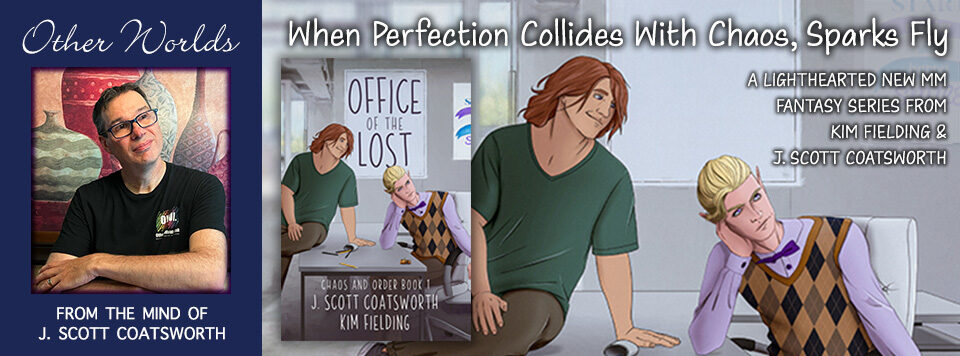
In indie publishing, we use the words “narrow” or “wide” to differentiate between two vastly different strategies.
Selling narrow means utilizing only one vendor—typically Amazon—and essentially putting all of your eggs in one basket. It can have its own rewards, as with the ranking thing, but you are also subjecting yourself to the whims of one vendor. And if they ever decide to shut you down, which Amazon has done before, you are entirely at their mercy.
If instead you decide to go “wide,” it means you are selling your books through multiple different vendors.
I started out my indie author life “narrow” – tethered to Amazon. It seemed like a good decision at the time. I had writer friends who were all-in on the online retailer, with their books also in Kindle Unlimited. KU is Amazon’s all-you-can-read service that gives readers the ability to pay on flat monthly price and read any books that are currently enrolled in the program.
Which sounds like a win-win, right? But there are a few caveats.
First off, the amount paid per page read varies from month to month as Amazon decides how much money to put in the pot, and it also depends too on how many readers read how many pages during that month. Although the monthly money pots have increased over time, so have the pages read. That’s typically meant a decline in what’s paid to the author for each page read, meaning you’ll make less when someone reads your book via KU today than you would have a couple of years ago.
From my limited experience with the program, a book has to be around a hundred-thousand words long to make the break-even point, where you earn about as much on a KU read as you would on an eBook sale. For anything shorter, you’re earning less, so you have to make it up in sales volume.
And don’t get me started on how Amazon counts “pages” or how many imaginative ways scammers have come up with to skim off part of the money pot for themselves with fake reads and knock-off stories.
Still, Amazon+KU has worked really well for many writers, and I’d imagine it still does for some. And when you release a new title, you typically get a bump in Amazon’s book rankings if your new book is in KU.
My first few Amazon only releases typically shot up into the 7000ish rank (of all eBooks being sold on the platform at that time) for a day or two. Granted, these were usually short stories priced at 99¢, so I made 30 cents a sale, and on the best one I earned $130. But then even that limited success dried up—like a drug that loses some of its effect with each use—and my new releases no longer soared in Amazon’ charts.
And here’s the other thing about KU. It’s an exclusive program. So if you sell your books in the Kindle Unlimited store, you can’t sell them through any other vendor. There’s something just fundamentally unsavory about that, and it was ultimately what made me decide to leave the program.
My books are still listed at Amazon, but they are no longer in KU, and the vendor is no longer my primary focus.
When I committed to going wide a while back, I started selling my eBooks through Barnes & Noble, Kobo, Apple, Google Play, Smashwords, Payhip, and a number of smaller vendors, as well as Ingram Spark for print (for bookstores and libraries).
Typically, authors establish direct accounts with Barnes & Noble, Kobo, and Google Play, and do the rest via a distribution site like Draft2Digital.com, a great service that you can also use (for free) to generate eBooks. They only charge you if you sell through them and there’s an actual sale, at which time they take a flat percentage of the sale.
Having direct accounts with Barnes & Noble and Kobo gives you some additional benefits, including access to the promo options for these two sites. Each offers monthly promotions that you can apply to join.
But if you’d rather not deal with so many vendors, you can also run those two via your Draft2Digital account.
Kobo, incidentally, offers the same kind of all-you-can-read program as Amazon, but they don’t force you to be exclusive.
Being wide means just about anyone can get your books, even folks who don’t want to deal with Amazon. And while it can take a while to build up sales via these non-Amazon venues, it can be done, and spreads out your risk. You’re no longer at the whim of a single vendor.
I was reminded of this by a recent visit and discussion with a local bookstore owner. Bookstores generally hate Amazon because of how the retail giant has cannibalized the market. And although Amazon is happy to sell to bookstores too, they rarely purchase from the online retailer, because bookstores run on the abilty to return book, and Amazon sales are non-returnable.
The bookstore owner strongly believes that authors should be promoting their own local bookstores over online retailers, and de-emphasizing Amazon in their sales channels.
And there’s a way to do that, at least for print books. A site called Bookshop.org works with local store owners and funnels the money back to them when they make a sale. If you have decided to go wide, it’s a great way to both increase your sales and give something back to your community.
In the end, it’s up to you if you wanna stay in the Amazon pool or venture out into wider waters. Each has its trade-offs, but there’s no reason why you can’t start with one strategy and then switch horses if you find it’s not working for you.
For me, I come down on the side of consumer choice and in support of my local stores. Amazon, I may never be able to quit you, but you’re not the only game in town.
